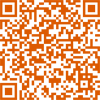cv | works | sculptures | site specific | environmental | land art | architectural | publications | exhibitions | symposia/lectures | cities | encounters | accounts
GRAPHIC ART
etchings and linoleum cuts
Lucien den Arend
|
Giclée's are available of most of the water colors by the artist. "Giclée, from French, commonly pronounced "zhee-clay," is the use of the ink-jet printing process for making fine art large format digital images. The term from the French verb gicler meaning "to squirt, to spray" first applied to "Iris prints" created in the early 1990s on the Scitex "Iris Graphics Models 3024, 3047, 4012 or Realist" color drum piezo-head inkjet proofer, a commercial printer designed to preview what a print will look like before mass production begins. The term, sometimes anglicized as giclée, is used to describe any high-resolution, large-format ink-jet printer output with fade-resistant dye- or pigment-based inks. It is common for these printers to use between six and twelve color inks. The use of dye-based inks requires special coating to avoid fading. In the past few years, giclée, as a fine art reproduction technology, is mostly associated with Archival Pigmented inks and Ultra Chrome Inks (which are guaranteed to last up to 200 years), rather than with dye-based inks which are more suitable for commercial output since commercial banners do not need to last a life time. The word giclée was coined by Jack Duganne to represent any digital print used as fine art. Its intent was to distinguish commercial digital prints from fine art prints. In much the same way that the word serigraph is used to denote a fine art silk screen print, the word giclée is to be used to denote a fine art digital print. Though originally intended for proofing, ink-jet printers are used by many artists as an alternative to lithography, serigraphy or serilith for limited edition original prints or reproductions. The cost of producing limited edition runs is greatly reduced compared to alternative printing methods." from Wikipedia |
|
search this site
3D anaglyph photographs of my sculpture
works©author: Lucien den Arend
© 1998/present denarend.com
Google
this site was developed by
DutchDeltaDesign
Penttilä
Seppäläntie 860 51200 Kangasniemi Finland
telephone +358 (0)44 264 12 12


